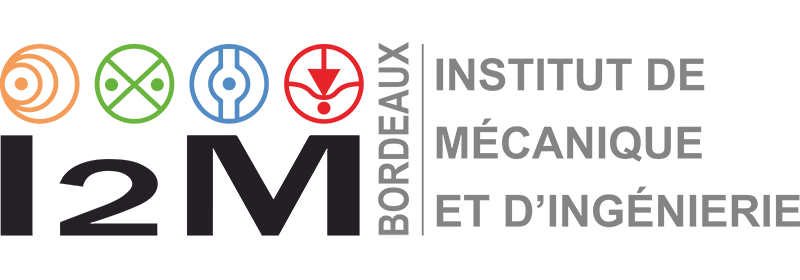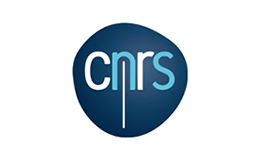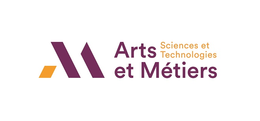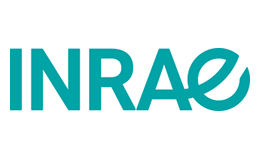Multi-physics optimisation of multifunctional 3D composites produced by additive manufacturing
PhD Position at I2M Laboratory of Bordeaux

The development of a general multi-scale multiphysics modelling strategy coupled with a general optimization methodology and a dedicated mathematical formalism to represent both the topology and the anisotropy of the continuum (at each scale) is of paramount importance to carry out the concurrent optimization of the topology and of the fibres-path for Variable Angle Tow (VAT) composites fabricated through the Fused Filament Fabrication (FFF) + Continuous Filament Fabrication (CFF) technology. Moreover, the design strategy must take into account the multiphysics criteria since the preliminary design phase to get optimized and multifunctional products.
The following three main challenges will be addressed in this PhD thesis:
- The simultaneous optimization of the anisotropy and topology descriptors at the macroscopic scale through mathematical description of the anisotropy based on invariants related to the elastic symmetries.
- The formulation of the manufacturing constraints involved at the mesoscopic scale (i.e. integration of external devices for multifunctional purposes) as equivalent constraints on the elastic invariants at the macroscopic scale.
- The multiscale multiphysical modelling of VAT composites to be integrated into the design strategy.
The development of advanced design tools to optimize the anisotropy (VAT laminates) and the topology via innovative numerical techniques is one of the most prominent research topics of the IMC department (I2M laboratory). A recently developed numerical approach (the Multi-Scale Two-Level Optimisation Strategy, MS2LOS) allows designing VAT laminates by integrating several manufacturing and mechanical constraints into the problem formulation. A multi-scale approach, split into two distinct (but related) problems, is used to obtain, at the macroscopic scale, the optimal distribution of the elastic invariants which define the material anisotropy and, at the mesoscopic scale, the optimal fibres-path within each ply meeting the optimal invariants distributions obtained at the macroscale. One of the most interesting advantages of this approach is that manufacturing and mechanical constraints can be directly formulated and imposed in the optimization problem at the macroscale as equivalent constraints on the elastic invariants describing the anisotropy field.
Regarding topology optimization, an innovative and efficient reformulation of the SIMP (Solid Isotropic Material with Penalization) method in the framework of NURBS hyper-surfaces has been developed at the IMC department in the framework of the projects FUTURPROD and OCEAN-ALM. The resulting strategy, called NURBS-SIMP method, is characterized by several benefits: 1) the number of design variables is unrelated to the number of elements; 2) the optimized topology is described by means of a pure geometric entity and does not depend upon the mesh of the model; 3) a specific NURBS property (the local support) ensures the continuity of the topology (regions of the structure with or without material); 4) the reconstruction of the topology is a straightforward task due to the CAD-compliant nature of NURBS entities.
The combination of these transverse skills and numerical tools, developed at the I2M laboratory, will allow the Ph.D. candidate to begin his research on solid foundations.
In the framework of the proposed research topic, the strategy to tackle concerns two problems formulated at two different scales:
First-level problem (FLP). The FLP focuses on the VAT laminate macroscopic scale. The goal is the concurrent optimization of the anisotropy and the topology descriptors. Constraints of different nature (multiphysics, geometrical and manufacturing) are formulated in terms of equivalent constraints on the elastic invariants and topological variable. At this level, multiphysic criteria could be imposed by means of either the global/local modelling approach or the use of metamodels. The latter would require the creation of representative high-fidelity FE models.
Second-level problem (SLP). The SLP focuses on the VAT laminate mesoscopic scale. The goal is to recover the optimal fibres-path (within each ply) satisfying the optimal value of the anisotropy and topology descriptors resulting from the FLP. NURBS entities are used to describe the fibres-path inside the generic ply: in this way the fibres-path can be easily converted, without time-consuming post-processing operations, into GCODE commands to feed software capable of simulating the FFF+CFF technology, which represents the last step before the manufacturing of the fully optimized structure.
Required profile:
MSc in Engineering Mechanics or Mathematical Engineering (Bac+5)
Programming (Python, Matlab)
FE modelling (Ansys, Abaqus)
Required documents:
CV, Motivation Letter, MSc Grades






